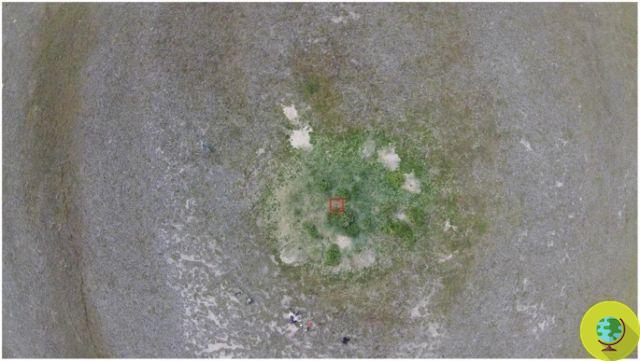With the scraps of their prey, Arctic white foxes unwittingly "fertilize" the soil around their burrows
With the waste of their prey, the white foxes of the Arctic unwittingly "fertilize" the soil around their burrows, giving life to a thick vegetation
Walking in the cold of the arctic tundra, a white fox's lair can be seen from a mile away. This, despite the fact that the animal's coat blends perfectly with the snow that surrounds it and the den itself is well hidden. However, the presence of a lot of vegetation around the den is an unequivocal sign of the presence of the fox. Yes, because this animal usually takes care of its garden!
We are led to think of gardening as an exclusively human activity, and instead many animals also "take care" of their own garden - sometimes unconsciously. First of all, practically all predators, when they leave the carcasses of their prey to decompose in the environment, are providing nourishment to the soil. But in the case of the Arctic fox, the beneficial action against the vegetation that surrounds it is not limited to this.
According to a study published in the journal Nature, in fact, fertilization of the soil through prey waste it is much more effective if done by the white fox. This is because the animal lives in a nutrient-poor area - the Arctic tundra - which benefits more than others from the nutrients from the carcasses of dead animals. But it is not the action of a single generation of animals that makes the difference: foxes, in fact, tend to leave their burrows "as an inheritance" to subsequent generations (some burrows are even hundreds of years old), and this amplifies their effect. beneficial to the soil. Over time, the land around their burrows becomes greener and greener, in contrast to the barren land around them.

As can be seen from the satellite image, the area around the white fox's den is characterized by dense vegetation (@ Nature)
For arctic foxes, which live in a place particularly hostile to survival, the lair represents their lifeline: there they raise their young, they hide from predators, protect themselves from the ferocious cold of the Arctic. In addition, they hide the food supplies and provisions collected for the winter season: just think that, in a single season, they can catch hundreds of goose eggs and other prey, to have enough food in the colder months. To better observe the effects of the presence of foxes in the environment surrounding their burrows, the researchers used satellite images, which show the presence of luxuriant vegetation right in correspondence with the burrows and nowhere else: therefore, it can be said that these animals are real "engineers" of nature, capable of profoundly modifying the environment around them.
Unfortunately, however, the Arctic fox is threatened with extinction due to global warming which is causing the melting of glaciers and the progressive reduction of its natural habitat, favoring instead the expansion of the red fox population.
Follow your Telegram | Instagram | Facebook | TikTok | Youtube
Source: Nature
We also recommend:
- Soon there may be more rain than snow in the Arctic, scientists warn
- Night shoe theft near Berlin: a fox passionate about footwear was stealing from her
- They think they bought a Husky dog, but it was an Andean fox (victim of the illegal animal trade in Peru)


























